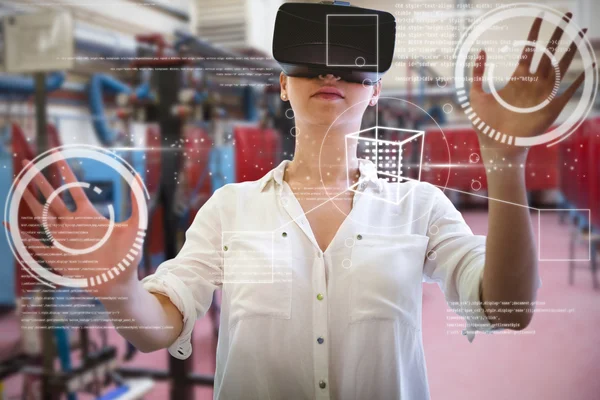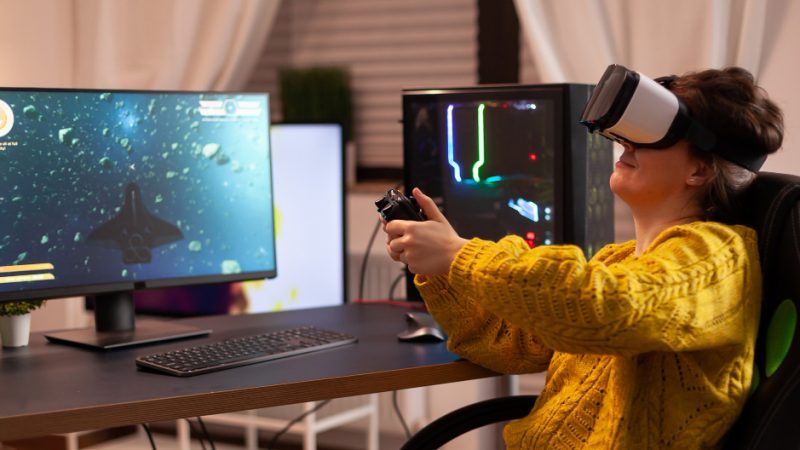Augmented Reality- an overview

Augmented reality overlays digital information and images on the user’s view of the real world. It has been around for decades, but it is only in recent years that it has started to gain mainstream attention and adoption. This is due to advances in hardware, such as smartphones and tablets, and improvements in software that make it possible to create more immersive and interactive experiences.
What is Augmented Reality?
AR’s simplest form integrates digital information with the user’s environment in real-time. This information can take the form of text, images, videos, or 3D models and can be overlaid on the user’s view of the real world. The key difference between AR and other forms of digital media, such as virtual reality (VR), is that with AR, the user can still see and interact with the real world. This means that augmented reality can be used in various applications, from entertainment and gaming to education, training, and even in industry and medicine.
Uses of Augmented Reality
Today, augmented reality is used for various applications, Entertainment & Gaming, Education & Training, and Industry & Medicine being the popular industries for adopting AR in their workflow:
1. Entertainment and Gaming
One of the most popular uses of augmented reality is in entertainment and gaming. With AR, game developers can create experiences that blend the real and virtual worlds, making the gameplay more immersive and interactive. For example, AR games like Pokemon Go and Harry Potter: Wizards Unite allow players to catch virtual creatures and cast spells in the real world. Similarly, AR-enabled board games like Catan AR and Ticket to Ride AR bring a new level of immersion to classic board games.
2. Education and Training
Augmented reality can also be used in education and training to create more engaging and interactive experiences. For example, AR-enabled textbooks can provide students with 3D models and animations that help them understand complex concepts. Similarly, AR-enabled training programs can give workers simulations and visual aids that make understanding and retaining information more accessible.
3. Industry and Medicine
Augmented reality can also be used in industry and medicine to improve productivity and efficiency. For example, AR-enabled glasses can provide workers with information and instructions. At the same time, they work on machinery, which reduces the need for training and improves safety. Similarly, AR-enabled surgical tools can provide surgeons with real-time information during procedures, improving the surgery’s accuracy and outcome.
Future of Augmented Reality
As the technology behind augmented reality continues to improve, we will see more and more applications for this technology in the future. This includes AR-enabled contact lenses, allowing users to overlay digital information on their real-world view without needing any external device. Additionally, artificial intelligence (AI) and machine learning (ML) advancements will enable AR to create more realistic and interactive experiences.
Upcoming Developments in Augmented Reality: What to Expect in the Coming Years
Augmented reality is a technology that is rapidly evolving. There are many exciting developments in augmented reality to look forward to soon. There are several upcoming developments in augmented reality, including:
1. Improved hardware
One of the most exciting upcoming developments in AR is the improvement of hardware. With the advent of 5G and edge computing, AR experiences will become more seamless and responsive. This will allow more complex and interactive AR applications, such as those used in gaming, to be developed.
2. Increased use in an enterprise
Another area where AR is set to grow is in an enterprise. Industries such as manufacturing, retail, and healthcare are already using AR for training and remote assistance. We can expect even more widespread adoption as technology improves in these fields.
3. Advancements in natural language processing
Advancements in natural language processing (NLP) are also expected to play a significant role in the future of AR. With NLP, AR interfaces will become more natural and intuitive, making it easier for people to access and use digital information in their everyday lives.
4. Increased use in education and entertainment
Education and entertainment are also areas where AR is set to grow. From virtual field trips to interactive storybooks, AR is being used to create more engaging and interactive learning experiences. AR is used in entertainment to create new interactive experiences, such as location-based games and live events.
5. Development of smart glasses
Another exciting development in AR is the development of smart glasses. Companies like Apple, Google, and Facebook are investing heavily in developing smart glasses that provide a more seamless and natural AR experience. These glasses will allow users to access digital information without taking out their phones or looking at a separate device.
6. Development of mixed reality
Mixed reality (MR) is another area where AR is set to evolve. By combining AR and virtual reality (VR) technology, we can create a more immersive experience that blurs the line between the real and digital worlds. This will open up new possibilities for gaming, education, and other industries.
7. Development of Spatial Computing
Spatial computing is expected to play a significant role as augmented reality improves. Spatial computing allows people to interact with virtual objects in real-world environments more realistically and naturally. This will enable new applications, such as virtual try-on for clothes and furniture, and will change how we interact with the digital world.
Conclusion
Augmented reality is a powerful technology with various applications. It has slowly evolved from coded to no-code experience building, with PlugXR (A WEB 3.0 platform) being one of the pioneers. Brands across industries, entertainment and gaming to education, training, and even industry and medicine are leveraging such platforms to improve their offerings. And, as technology continues to improve, we can expect to see more and more uses for this technology in the future. The future of AR is exciting, and it will be interesting to see how it will change our everyday lives.






